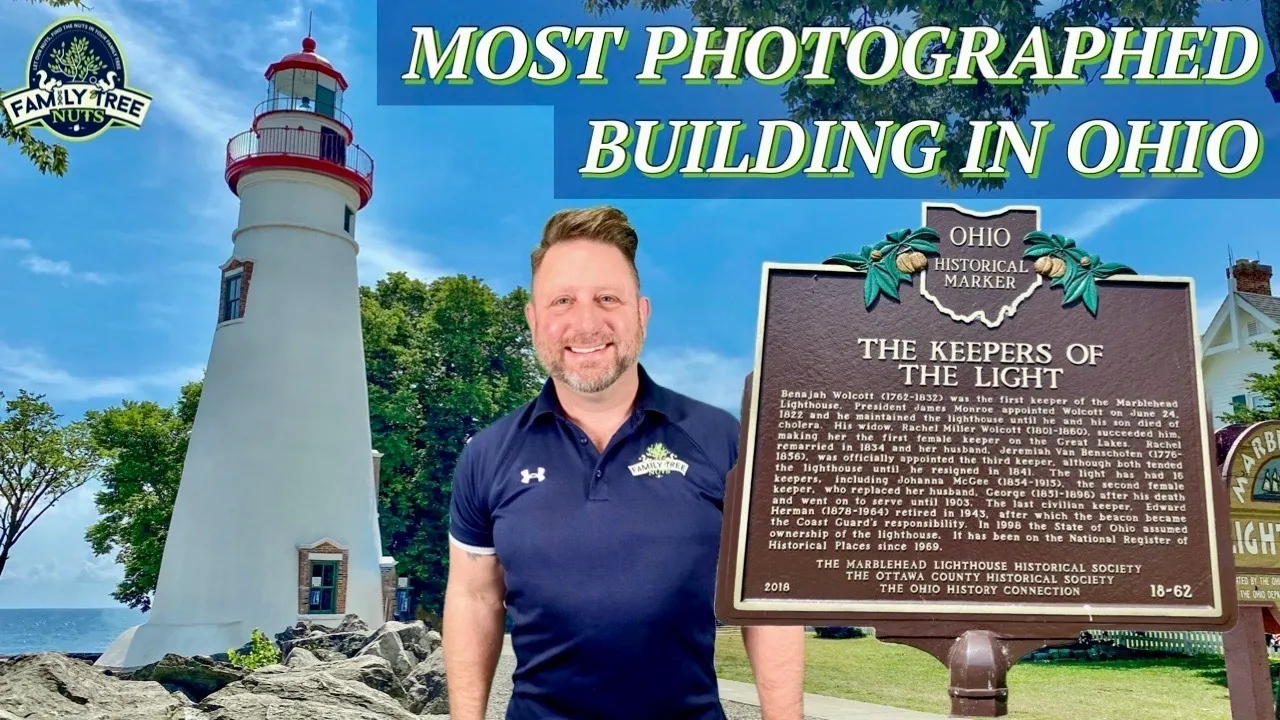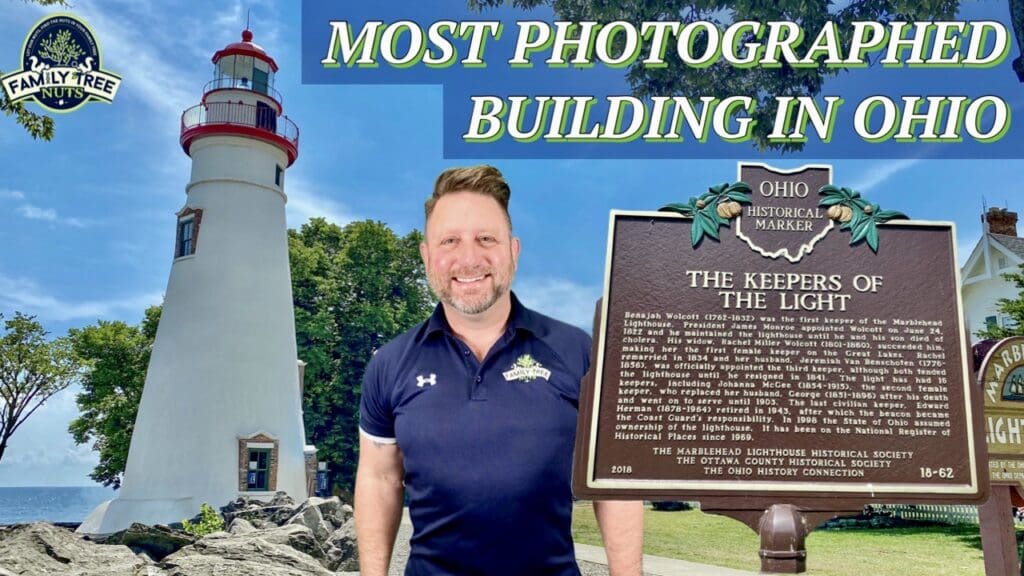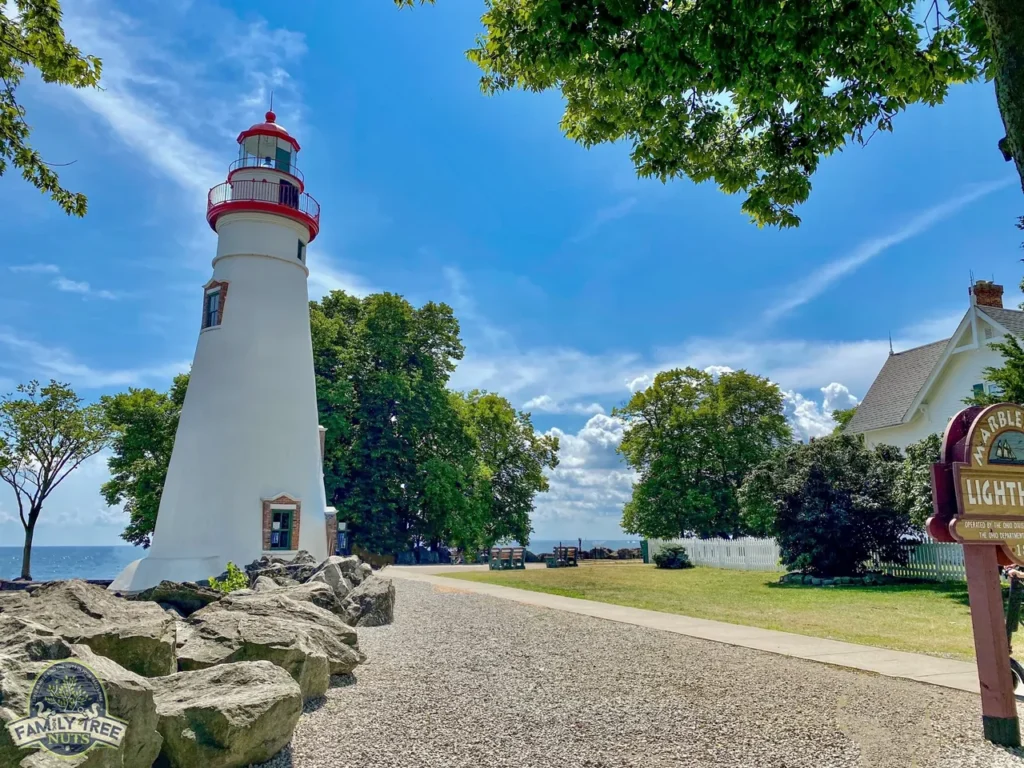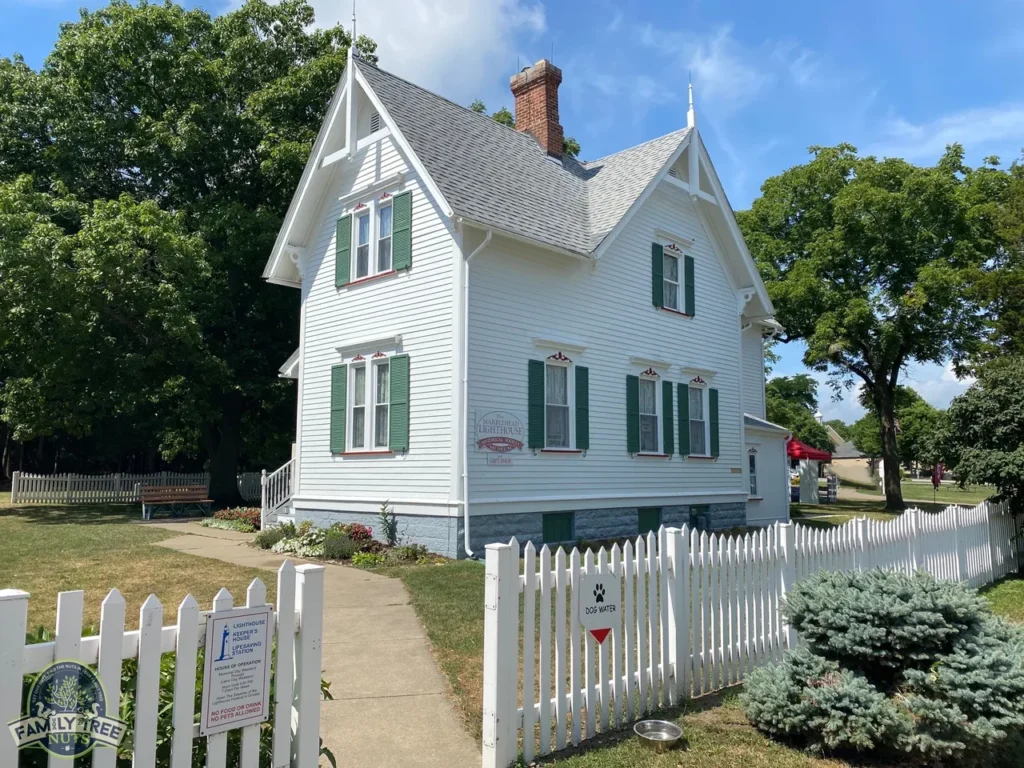
OLDEST ON GREAT LAKES! MARBLEHEAD LIGHTHOUSE! OHIO HISTORY!

It’s the oldest continuously operated lighthouse on the American side of the Great Lakes. It’s the most photographed building in the State of Ohio. It’s uniqueness and simple beauty has made it a place of pilgrimage for decades just to pose for pictures, and learn about the area’s history, which includes the first battle in Ohio, in the War of 1812. This little lighthouse has no doubt saved countless lives in the last two centuries and it has had a tremendous impact on the local economy. It was called the Sandusky Light, or Sandusky Bay Light for its first five decades but since then has been called the Marblehead Lighthouse.

Recently we visited this historic this historic place, and we wanted to share its amazing history with you. Over two centuries ago, in 1819, just six years after Commodore Oliver Hazard Perry had defeated the British Navy in the Battle of Lake Erie, during the War of 1812, the United States Congress approved $5,000 to be used for the construction of a lighthouse at the entrance of Sandusky Bay, in Ohio. The lighthouse was built in the fall of 1821 by William Kelly, Amos Fenn, and William B. Smith.
A Sixty-year-old Revolutionary War veteran, Benajah Wolcott was named the first lighthouse keeper and the light was lit for the first time in June, 1822. Wolcott first came to the area in 1806 to survey a five-hundred-acre plot of land called “The Firelands”, to be given to settlers from Connecticut whose homes had been burned by the British during the Revolutionary War. The original structure of the lighthouse was built to fifty feet tall. The first light was thirteen whale oil burning lanterns with brass reflectors that had to be refilled every four hours and burned 11 gallons of oil a night. An oil storage building stood at the base of the lighthouse.
A stone keeper’s house was also built in 1822, next to the lighthouse and the present keepers house was built in 1880. It was occupied until 1987 when its owners passed away and since the year 2000, has been operated as a museum.
Local tradition states that Mr. Wolcott didn’t live in the stone keepers house, instead he stayed at his own house about two miles away where he also farmed. That house is still standing and is the oldest surviving home in Ottawa County, Ohio. Tradition has said that Wolcott had the house built in 1822 as a wedding present for his wife Rachel Miller and it was built by William Kelly, the same person who built the lighthouse. Rachel lived in the house until her death and their son Henry Wolcott lived there until 1896.
The house has long been thought to be the site of a battle between American and British supporting Native Americans, that was the first battle in Ohio in the War of 1812. About sixty American militia men were ambushed by one hundred and thirty Indians. About forty Americans took shelter in a cabin and distracted the Indians while the main party escaped. Two days later the men in the cabin were rescued. Thirty to Forty Potawatomi Indians and eight Americans were killed in the battle that neither side could claim victory in. The eight Americans bones were gathered later by Horace Ramsdell and were buried near the site of the make shift fort. Horace’s younger brother Valentine was one of those killed in the battle. A monument was erected in 1857 by United States Senator Joshua Giddings, who at age sixteen, had fought as a private in the battle. You can visit the monument and graves today.

While the Wolcott house sits only about five hundred feet from the cemetery, it is now disputed that the house was the site of the cabin used by the Americans as shelter during the battle. For many years it has been believed that the cabin was Wolcott’s but today some scholars say that the cabin from the battle was owned by a man named Patterson.
The lighthouse has had sixteen keepers guard the light and was the first lighthouse to have a female keeper. In fact, the lighthouse has had two female keepers. The keepers had other duties besides keeping the light lit at night, they also were required to keep a log of passing ships, record weather conditions, and organize any rescues that may arise. In 1832, the first keeper Benajah Wolcott passed away, along with his son during an epidemic of cholera. Wolcott’s wife Rachel then became the first female keeper of a lighthouse on the Great Lakes. Rachel remarried in 1832 and her new husband Jeremiah VanBenschoter became the keeper.
In 1858, the whale oil lamps were replaced by a kerosene lamp and a more powerful lens to put out a brighter light. As ships on the lake became larger and traveled farther out, the lighthouse had to be made larger, and fifteen feet were added to the tower in 1898, making it sixty-five feet tall. A brick tower was built inside the original stone structure to make it more stable for the additional height of the tower. The light was modified again in 1903, and this time a mechanical mechanism was added that rotated the lens and made the light flash every ten seconds.
The kerosene lamp was replaced with an electric light in 1926. In 1958, the entire system was automated to turn on at night, and off in the morning. With the threat of World War II looming, the lighthouse fell under the jurisdiction of the U.S. Coast Guard in 1939. In the late 1990s, plans were made to tear the lighthouse down and replace it with a steel pole with a light at the top but the Marblehead Lighthouse Historical Society was formed and assisted the effort for the area to become an Ohio State Park. Today, over one million people visit the park.
Also, on the park grounds is the Lifesaving Station Museum which is a replica of a station built in 1876 just a few miles away. The need for the station came out of an epic event that took place on May 1, 1875. A schooner named “Consuelo” was leaving Kelley’s Island with a cargo of stone blocks when a strong wind caused it to capsize and sink. Three brothers Lucian, Hubbard, and A.J. Clemons saw this horrific event and grabbed a skiff and rowed out to help the crew. The brothers were able to save two of the six crew members but then found themselves in danger as well. A tugboat named “Winslow” then arrived and saved the heroes and the rescued men. Congress awarded the oldest brother Lucian the very first Gold Lifesaving Medal and Hubbard and A.J. were presented the Silver award.

The next year a U.S. Lifesaving Station was built and Lucian was appointed as its first keeper. Lucian stayed on as keeper until 1897. This station was one of six in Ohio, and one of seventy-seven on the Great Lakes. The stations were manned by crews of six surfmen and a keeper. The station houses contained a rescue boat which had launching rails leading into the water. The U.S. Lifesaving Service was merged into the newly formed U.S. Coast Guard in 1915.
The museum is loaded down with history of the U.S. Lifesaving Service, historic lifesaving equipment, houses a twenty-seven-foot rescue boat, and is complete with the launch rails into the lake.
Another thing the park is known for is the bricks in the walkway. Beginning in 2009, bricks were able to be purchased with a personal engraving of a memory or loved one. This project helps to raise money for the preservation of the park.
Another thing that the Marblehead Lighthouse is known for is its view of the famous amusement park Cedar Point. Cedar Point was founded in 1870, and has an amazing history of its own. We will cover the history of this national treasure in a future video.
So, there you have it, the history of this amazing historic spot, The Marblehead Lighthouse. What do you think? Is it worth preserving places like this, or should we not waste funds and just replace these lighthouses with modern technology? We’d love to hear what you think in the comments below. Also, have you visited here and have a fun memory that you’d like to share, comment with that too. It’s exciting to hear when history connects with our own fond memories. If you’ve never made it to the Marblehead Lighthouse, we hope that you get that opportunity and when you do, hopefully this video will assist you in appreciating its fine history. We are proud to share it with you. Be sure to check out our video from here below.
-Col. Russ Carson, Jr., Founder, Family Tree Nuts
